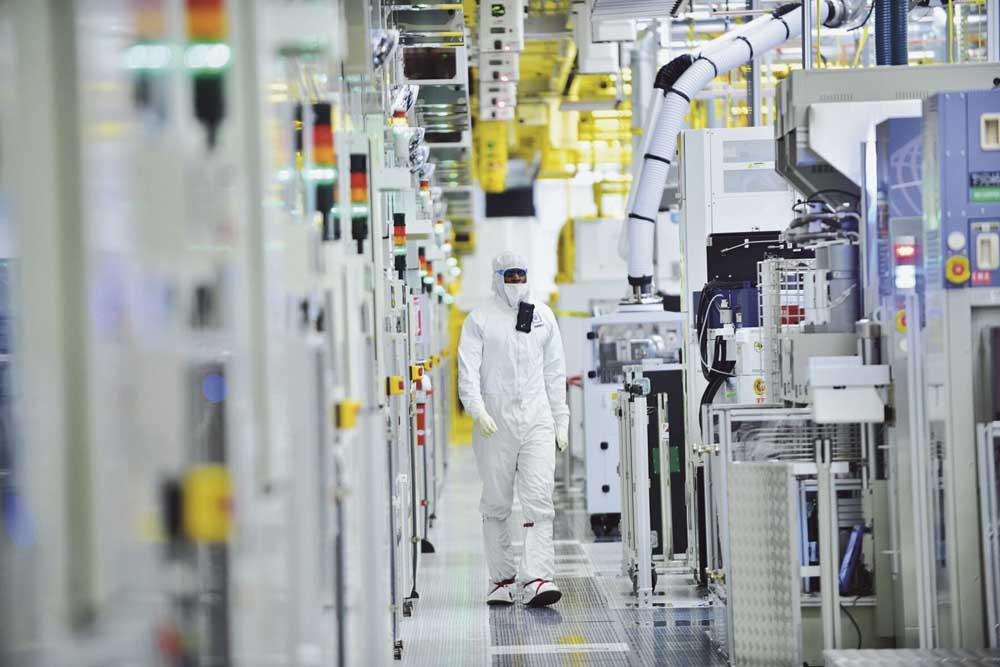Intel stumbled when it should have soared in 2024
Published 8:30 am Friday, January 3, 2025

- In the midst of increased government funding and job cuts, Intel's Washington County campuses hit a few snag points when it came to its pollution controls.
Intel appeared to be on track for another year of growth and innovation, until the layoffs started.
Trending
Billions of dollars were directed to the company, with campuses in Hillsboro and Aloha, in early 2024. Money flowed from the state and federal governments, thanks to legislators looking to create jobs and increase domestic semiconductor manufacturing.
Intel plays a significant role in Oregon’s economy, with the company accounting for 4% of statewide employment, and investments in Oregon’s operations play a larger part in the Intel’s technology leadership goals.
The Hillsboro site is the company’s largest, with more than 22,000 employees. As Intel’s “innovation hub” for semiconductor research, technology development and manufacturing in the U.S., the company plans to use the funds to advance cutting-edge technology by creating better process nodes, which will allow Intel to produce more powerful computer chips. Funding will also allow the company to utilize the world’s first High-NA EUV lithography tool — the most advanced lithography tool available.
Trending
With this combination of funds, the company expected to create about 10,000 company jobs and 20,000 construction jobs across its multiple campuses, as well as more than 50,000 indirect jobs with suppliers and supporting industries.
But the tides seemed to shift when, in August, Intel outlined reduced costs totaling $10 billion in 2025. Prior to a planned companywide meeting Aug. 1, Chief Executive Officer Pat Gelsinger sent a message to employees foreshadowing impending cuts of 15% — reducing the company’s headcount by around 15,000 roles.
Gelsinger said the company was facing a tight cost structure, with annual revenue was around $24 billion less than it was last year, despite the fact that the existing workforce was 10% larger.
Washington County alone accounts for nearly a fifth of the global semiconductor company’s employees, including over 22,000 workers across its Hillsboro and Aloha campuses. In 2023, the company trimmed its workforce by 5%.
The news came in October that approximately 1,300 local Intel employees would be laid off in the culmination of the semiconductor giant’s plans to reduce its staff. Employees were given opportunities for early retirement and voluntary separation from the company.
In early December, Intel announced that Gelsinger retired from his role as CEO and stepped down from his position on the board of directors.
Air permits and taking flight
In the midst of increased government funding and job cuts, Intel’s Washington County campuses hit a few snag points when it came to its pollution controls.
The funding boosts from the government more than offset a $30,816 fine issued in 2023 by the Oregon Department of Environmental Quality in July when Intel left one of its acid gas scrubbers at the D1X facility in Hillsboro on a “hold” status from July 7 to Sept. 9, 2022. Because the scrubber was inoperative, caustic gasses were released as air pollution.
Shortly after the fine was issued, Intel applied for a permit requesting to more than double its greenhouse gas emission limits to nearly 1.7 million tons per year, which would make the company one of the largest greenhouse gas emitter in the state. DEQ issued a new permit to the chipmaker April 16, granting Intel’s request to increase emissions at its Hillsboro and Aloha campuses.
Before the DEQ approved the permit, Intel notified the state regulatory agency of an error — it had underreported its Oregon carbon dioxide emissions by about 150,000 metric tons in 2022. According to state regulators, the reporting mistake was “an inventory error” that was not only missed by Intel but a third-party verifier the company hired to verify its report.
In the future, the DEQ will enforce harsher punishments if the mistake is repeated.
While acknowledging the steep increases for air contaminants, an Intel spokesperson previously said the permit is geared toward the maximum needs for a “full buildout,” suggesting the company may not approach the requested caps for some time to come.
Meanwhile, despite cost-cutting measures in 2023, Intel in April resumed flying its employee air shuttle after grounding flights last year amid a variety of cost-cutting measures. The flights connect Intel employees across the company’s campuses in California, Arizona and Oregon.
It takes about 23 minutes for a plane full of Intel employees to fly from the Sacramento Mather Airport to the San Jose International Airport, near Intel’s headquarters in Santa Clara, on the company air shuttle. The BlueSkyModel states that a plane produces an average of about 53 pounds of carbon dioxide per mile flown, which comes out to about 9,424 pounds of CO2 for a round-trip flight between the Sacramento Mather Airport to the San Jose International Airport.
The company expected to create about 10,000 company jobs and 20,000 construction jobs across its multiple campuses, as well as more than 50,000 indirect jobs with suppliers and supporting industries.







